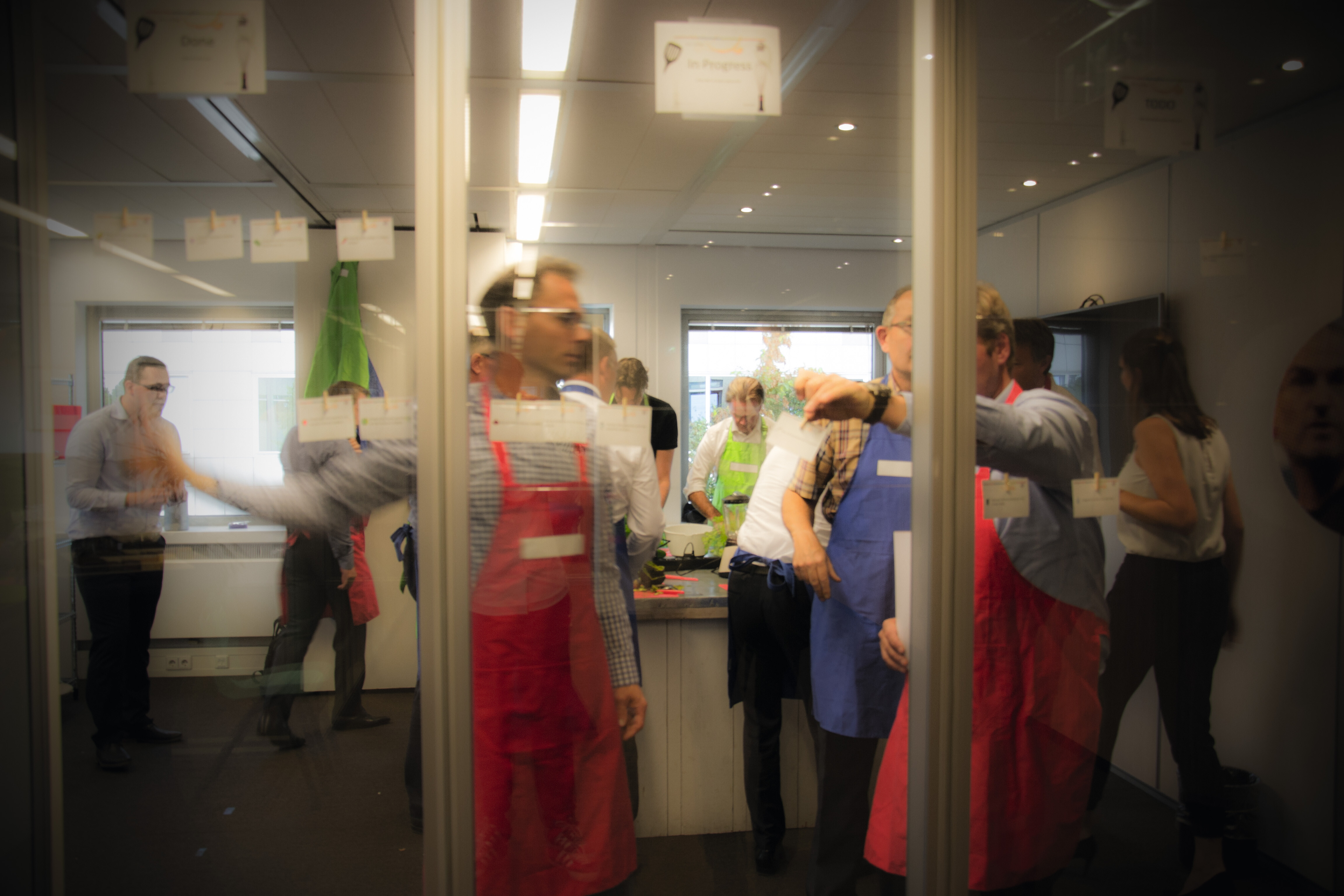News & Blogs
Stay updated with the latest news, insights, and expert blogs from Emixa. Explore industry trends, digital innovations, and company updates all in one place.

- SAP
RISE with SAP Makes Cloud Transition Easy
Transferring a business-critical system such as SAP from on-premise to the cloud does not happen overnight. Organizations want to be able to switch without disruption, achieve the promised financial business case and innovate faster. From the employee's perspective, no change should be noticeable; for the employee, the data must be available. On-premise or online does not matter. For the IT department, this is more complex; with networks, availability and technical changes, a plan is needed. With RISE with SAP, the implementation side becomes easier than ever. RISE with SAP removes barriers through a simple step-by-step plan with which every organization can benefit from the benefits of cloud. RISE with SAP simplifies transition to the cloud in three steps, fully guided by SAP: Step 1. Business Process Intelligence Step 2. Business Case Step 3. Integrate with cloud environment Step 1. Business Process Intelligence The first step to the cloud is a comprehensive analysis of the processes. You could almost call it an ERP tradition, but there is an important change in approach in the approach of RISE with SAP: it is done via intelligent tooling instead of intensive workshops, interviews, observations and analyses. The goal is to adapt the business processes to the S/4 HANA standard. This phase gives you insight into the delta between current SAP use and the fit-to-standard at S/4 HANA. This translates into less customization, easier maintenance and faster implementation. In addition, the way is clear for future intelligent solutions, such as Machine Learning (ML), Internet of Things (IoT) and Robotic Process Automation (RPA), which are supplied as standard by SAP. Step 2. Business case If it is clear what can be directly supported and what adjustments are required within the business processes, the costs can be made transparent. RISE with SAP contains standard tools that provide immediate insight into how much work the implementation requires. The custom code analysis tool immediately makes it clear how many deviations from the standard there are in the current system. Based on this data, you know in advance where you stand and where the impact and change will be per user group. This means you know at an early stage which departments need extra attention. Transformation tactics can be used to help organizations and departments with this change. Finally, the figures for hosting via cloud at SAP also become clear compared to the current costs of an on-premise hosting construction. Step 3. Integrate with cloud environment Within RISE with SAP, technical management of the environment is in the hands of SAP itself. As a customer, you choose the cloud in which your software runs (Google Cloud or Amazon Web Services). SAP integrates with that environment and ensures that the ERP system continues to run. Emixa is the point of contact for issues. Whether this concerns user support or direct contact with SAP: Emixa remains the first point of contact. Emixa also supports the transition to S/4 HANA and all technologies and processes that are implemented during this process or afterwards. SAP Business Technology Platform The switch to SAP's cloud solution provides direct access to the SAP Business Technology Platform. Within this platform there is a SAP Store for (Fiori) apps. The store contains both third-party apps and those offered by SAP itself. This allows future apps to be selected and added quickly and securely by authorized employees. The SAP Fiori launchpad ensures that employees have only one login portal for all ERP-linked systems. The SAP Business Technology Platform also supports integrations with other software products, such as low-code solutions to support innovative and new process developments. By dividing the management of your landscape into mode 1 and mode 2, you can experiment with these innovations safely and quickly. Move to the cloud with RISE with SAP Switching to the cloud seems like a big step. Thanks to RISE with SAP, this is not so bad. The new implementation approach and the tooling to identify the required work in advance makes the transition easy. For employees, it doesn't matter where the data comes from, as long as it is there. Life becomes easier for administrators thanks to RISE with SAP. Just as important: organizations increase their performance and agility to switch. And these are qualities that an organization needs in today's rapidly changing world. Get in touch Ready to make a business change? At Emixa, we'd be glad to share our comprehensive insights. Contact us to discover how our approach can help your organization thrive in the cloud era. Let's embark a journey towards enhanced efficiency and effectiveness together! Patrick Beks As Director Technology and innovation Patrick plays a crucial role in driving technological innovation, fostering a culture of continuous improvement, and maintaining Emixa's competitive edge in the market.

- Mendix
Manufacturing Menu: A Strong Foundation for the Perfect Product
Before a product reaches the market, a manufacturing company must go through various preparatory actions and processes. It starts in the design phase with a precise product design. How will the product look? What need does it fulfill? What are its functionalities and features?

- Digital Twin
The Digital Twin for Industrial Machine Building
The world is going digital. This is not only changing how we work, learn or shop; it is also changing how products are made. Even the smallest machine builder must be able to develop modular, adaptable, multi-functional machines that can be tailored to consumer demand. This requires a high degree of flexibility, which can cause problems for data reuse. The requirements for each machine are then namely customer specific and turn each project into a custom design with a series size of 1. How can machine builders achieve this level of flexibility without increasing costs? In addition, industrial machine builders must show their customers, even before the machine is delivered, how it will work and integrate with other systems. This way, they can demonstrate that their design can achieve the high ROI (Return On Investment) and low TCO (Total Cost of Ownership) that production companies are looking for. They also have to comply with more and more legislation relating to the full life cycle of a machine, from energy consumption to eventual recycling costs. Everything here must be well documented so that it can be demonstrated at all times that the relevant legislation has been complied with. All this costs a lot of time, time that machine builders do not have because they have to compete with competitors from all over the world who are trying to supply the same machines faster and cheaper. Integrated process To cope with this pressure from customers, competitors and legislation, they need integrated tools that prevent working in silos. There is simply no time to design, build and commission a machine in separate consecutive steps by different departments. Such a sequential process is not only slow; you also run the risk here of losing information and introducing errors at any time data goes from one department to another. The designs themselves are becoming increasingly complex. They often have sensors that can monitor the performance and output of the machine and are part of a uniform production system together with other machines. That complexity affects the physical design. You cannot afford to waste time at the end of a project redesigning a component or assembly because the wires and cables cannot be connected correctly. Or when you are testing the physical machine, it is much too late to discover that the control software does not take into account the mechanical limits. Digital Twin With so much software, automation and electronics in modern machines, a mechatronic design platform is needed for a good design that can do much more than just deal with the mechanical CAD design. To solve certain problems, it is necessary to be able to work with multiple disciplines at the same time. The solution lies in new digital technologies that create a digital thread of information between all departments involved in a project and runs through every phase of the product life cycle: from the initial requirements, through design, production, commissioning, delivery and ultimately maintenance of the machine. This form of digitisation allows you to create a digital representation of the smart, connected, custom machine that customers demand: The 'Digital Twin'. This digital twin goes much further than just a 3D CAD design and makes use of the latest technologies and tools for, for example: Electro-mechanical design Topological optimisation Virtual commissioning Simulation Additive Manufacturing Virtual Reality The benefits of digitisation can amount to a substantial increase in production, creating more (and more efficient) machines with the same resources and lowering costs or increasing output at the same cost. See it as a kind of digital productivity bonus. Investing in the next generation of design tools needed to make custom machines is the way to overtake competitors who cannot act as quickly or deliver exactly what customers want, giving you a loyal customer base. Interested in what a digital twin can do for your business? Contact us to find out more about the possibilities.

- Mendix
Multi-Factor Authentication for Mendix
As Emixa places great emphasis on creating high-quality and secure applications, we are currently actively implementing two-factor authentication (2FA) for multiple clients. Typically, this is done using available Mendix modules from the Mendix Marketplace. However, the Emixa team believed that a better and more secure solution could be developed. Therefore, the team recently created an improved standard module during one of the Emixa R&D days, making it available to the entire global Mendix community.

- Mendix
Dazure Streamlines and Simplifies Services with the Launch of Pokket
Creating a well-thought-out mortgage advice is a complex task, considering numerous variables that both the advisor and the buyer need to take into account. Questions such as the maximum mortgage someone can obtain or the risks of death and disability during the mortgage term can complicate the process. With Pokket, Emixa and Dazure have successfully developed an application that simplifies complexity, enabling advisors to deliver better and faster customized solutions.

- PLM
Hennes de Ridder about modular construction: 'Legoisation'
Hennes de Ridder is an Emeritus Professor of Integral Design at TU Delft. As a 'construction critic', he is frustrated by the constant reinvention of the wheel in the sector. We talked to him about how modular construction or 'Legoisation' could push the sector to new levels.

- Business Consulting
Emixa Agile Workshops (Offline & Online)
For most organizations, adopting Agile through the Scrum methodology represents a fundamental shift in collaboration and management. To implement this change effectively, it is crucial first to experience and understand what Agile working through Scrum truly entails. To introduce this topic in an engaging manner, Magnus organizes Agile workshops where participants can experience this philosophy and way of working first-hand. These workshops are offered both offline, in the form of a cooking workshop, and online, where participants will build the ideal campsite!

- ERP Software
How Croonwolter&dros Achieved ERP-Driven Operational Excellence
In today’s competitive landscape, agility and operational efficiency define success. Companies like Croonwolter&dros are turning to innovative solutions to stay ahead of the curve. For Croonwolter&dros, implementing a cutting-edge ERP system wasn’t just a technological upgrade but a strategic step toward operational excellence and future-proofing the business.

- SAP
SAP S/4HANA Release 2022 – New EAM Functionalities for Maintenance
SAP is continuously optimizing and updating S/4HANA. Just think of the Maintenance Planning Overview in the initial S/4HANA release. With this year's new S/4HANA release, new functionalities have been added to the Enterprise Asset Management domain. It is clear that SAP is investing in its development. This year's recent release contains best practice processes and capabilities that many companies have been dreaming of for years. It is crucial to always upgrade your system to the latest version to continue to make optimal use of SAP S/4HANA. In this blog we explain the main new functionalities in the S/4HANA 2022 release with which SAP can support the maintenance process even better. Figure 1: The Enterprise Asset Management dashboard in the initial S/4HANA release New processes with SAP's new 9-phase model The SAP maintenance process has been the same for years and is fairly standard. Companies regularly use user statuses to further expand the maintenance process and better tailor it to their company. With SAP's new 9-phase model, this is no longer necessary. With the 9-phase model, SAP is adding new maintenance processes - called 'new scope items' - to the 2022 release. In addition, new Fiori apps now guide users through the process and notifications, orders and operations still form the basis of every process. Examples of these new processes: Reactive Maintenance (corrective maintenance) Proactive Maintenance (preventive maintenance) Improvement Maintenance (project based maintenance) Operational and Overhead Maintenance (routines, inspections, ...) Figure 2: SAP's 9-phase model and the relationship between notifications, work orders and operations Create maintenance reports clearly with the priority matrix Creating a notification for maintenance tasks is often the start of the maintenance process. This is already a simple action in SAP S/4HANA, but still lacks some crucial features. After Maintenance Managers and Gatekeepers have been getting gray hairs for years when trying to properly prioritize maintenance reports, you will now no longer see a selection list, but rather a priority matrix with an overview. It is now possible to determine the priority of maintenance reports using a priority matrix. Priority is determined based on the chance of failure and its effect. You can configure the priority matrix yourself for different categories such as production, safety and environment. Figure 3: The new 'Create Maintenance Request' app in SAP for maintenance notifications with the priority matrix As you can see in the image above, the new 'Create Maintenance Request' app contains new fields for Failure Mode and Detection Method. The breakdown indicator can also be set more easily. Notifications can now also be automatically saved as drafts after creation. You can edit these afterwards before sending them. Easily follow up on maintenance notifications With the new 'My Maintenance Request' app you can easily follow up on your own maintenance reports; from creation to complete handling or rejection. If the applications are incomplete or more information is required, this will also be made clear. In short, the 'My Maintenance Request' app is ideal for Operation Managers. Figure 4: The new 'My Maintenance Request' app Gatekeeping finally supported A process that was not well supported by standard SAP is Gatekeeping. Even though this is the process step that should ensure good cooperation between operations and maintenance, there were no tools to implement this optimally in SAP. The Gatekeeper can now use the new 'Screen Maintenance Request' app to thoroughly check new maintenance reports and, if necessary, send them back to the requester and reject or approve them. Of course, both the priority and the deadline of the notification can be revised. Figure 5: The new functionality for checking maintenance messages Many more new EAM functionalities in SAP S/4HANA This blog contains some interesting new EAM functionalities in the S/4HANA release 2022. In addition to the above functionalities, there are more, including: An extensive 'maintenance order approval' process with workflows that allows you to approve more than just costs The operation execution stages: PRE, MAIN & POST. This allows you to plan the placement of racks on the work order, for example Bundling orders with Maintenance Planning Buckets New Maintenance Backlog Overview for a better overview of all maintenance tasks on the backlog Even better planning with SAP Resource Scheduling for Hana (RSH) The implementation of the new S/4HANA release that is suitable for you With our expertise in Enterprise Asset Management for project and asset-intensive organizations, we can support the IT department in the implementation of new releases that are suitable for you. We can also fully take care of the activation of the new functionalities. With our years of expertise in SAP and with specific project and asset-intensive processes, we map the current process and see which new EAM functionalities in SAP S/4HANA release 2022 can help you support current maintenance processes even better. Vincent Beumer Vincent is a marketing manager and highly experienced consultant with extensive knowledge on Digital Transformation and Analytics within the SAP-domain. Get in touch Ready to make a business change? At Emixa, we'd be glad to share our comprehensive insights. Contact us to discover how our approach can help your organization thrive in the cloud era. Let's embark a journey towards enhanced efficiency and effectiveness together!